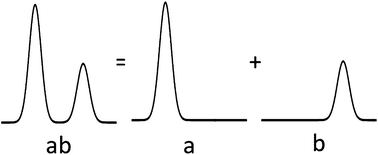A new algorithm for identification of components in a mixture: application to Raman spectra of solid amino acids
Abstract
The procedure for identifying components in a mixture was developed and tested on Raman spectra of mixtures of solid amino acids, using the spectra of single amino acids as templates. The method is based on finding the optimum scaling coefficients of the linear combination of template spectra that minimize the Canberra distance between measured and reconstructed spectra. The Canberra distance, used here as a measure of dissimilarity between spectra, defines the non-convex objective function in the related optimization process. In view of the possibility of the presence of local minima, differential evolution, which is a non-gradient stochastic method for finding the global minimum, was chosen for optimization. The method was tested on twenty measured spectra of mixtures of solid powders containing one to eight amino acids taken from the collection of twenty that are coded in living organisms. The results show that the procedure can successfully identify several amino acids, and, in general, several components in a mixture. The method was shown to compare favorably against the least squares and partial least squares methods, the procedures used in commercially available chemometrics packages.


 Please wait while we load your content...
Please wait while we load your content...